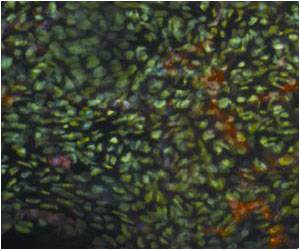People ailing from degenerative grade I spondylolisthesis with lumbar spinal stenosis could find better quality of life by undergoing a laminectomy with lumbar spinal fusion versus laminectomy alone.

The researchers conducted a prospective, five-center randomized controlled trial (RCT) from 2002-2009. Patients were randomized to receive either laminectomy alone or laminectomy with posterolateral instrumented fusion. The results of this study, Lumbar Spinal Fusion plus Laminectomy is Superior to Laminectomy alone for Grade I Degenerative Spondylolisthesis: SLIP Study Results, will be presented by Zoher Ghogawala, MD, FAANS, 11:45-11:59 a.m., on Monday, April 16. Co-authors are Edward Benzel, MD; William Butler; James Dziura; Subu Magge; Jean-Valery Coumans; J. Fred Harrington; Volker Sonntag; and Fred Barker.
A total of 130 patients were screened for the study, with patients aged 50 to 80 with degenerative spondylolisthesis (3-14mm) and symptomatic LSS eligible. Patients with mechanical instability or gross motion (> 3mm) were excluded. A total of 106 patients were enrolled, with 66 randomized to receive either decompression alone versus decompression with surgery. The mean age was 66.7 years (80.3 percent female). Primary outcome measure (SF-36 PCS) was assessed at the clinic at one, three, six and 12 months; and then annually by phone for five years. Follow-up rates were 86 percent (two years) and 85 percent (four years). Sample size estimate to demonstrate superiority with 80% power was 64 patients. The following results were noted:
- Surgery was associated with significant improvement in SF-36 PCS and ODI scores at each time point (P<0.05).
- Laminectomy with fusion had significantly better SF-36 PCS scores that laminectomy alone at six months (P=0.03), two years (P=0.02) and at four years (P=0.01) post-operatively.
- For patients without fusion, the re-operation rate was 12/34 (35.3 percent). When fusion was added to laminectomy, the re-operation rate was considerably lower: 4/31 (12.9 percent) (P=0.036).
The researchers concluded that lumbar spinal fusion added to laminectomy when treating degenerative grade I spondylolisthesis is associated with superior SF-36 PCS outcome, and results in fewer re-operations within four years of the initial procedure.
Disclosure: the author reports no conflicts of interest.
Advertisement
Media Representatives: If you would like to cover the meeting or interview a neurosurgeon - either on-site or via telephone - please contact John Iwanski, AANS Director of Member and Public Outreach, at 847-378-0517, or call the Annual Scientific Meeting Press Room beginning Monday, April 16 at 786-276-4501.
Advertisement
Source-Newswise











